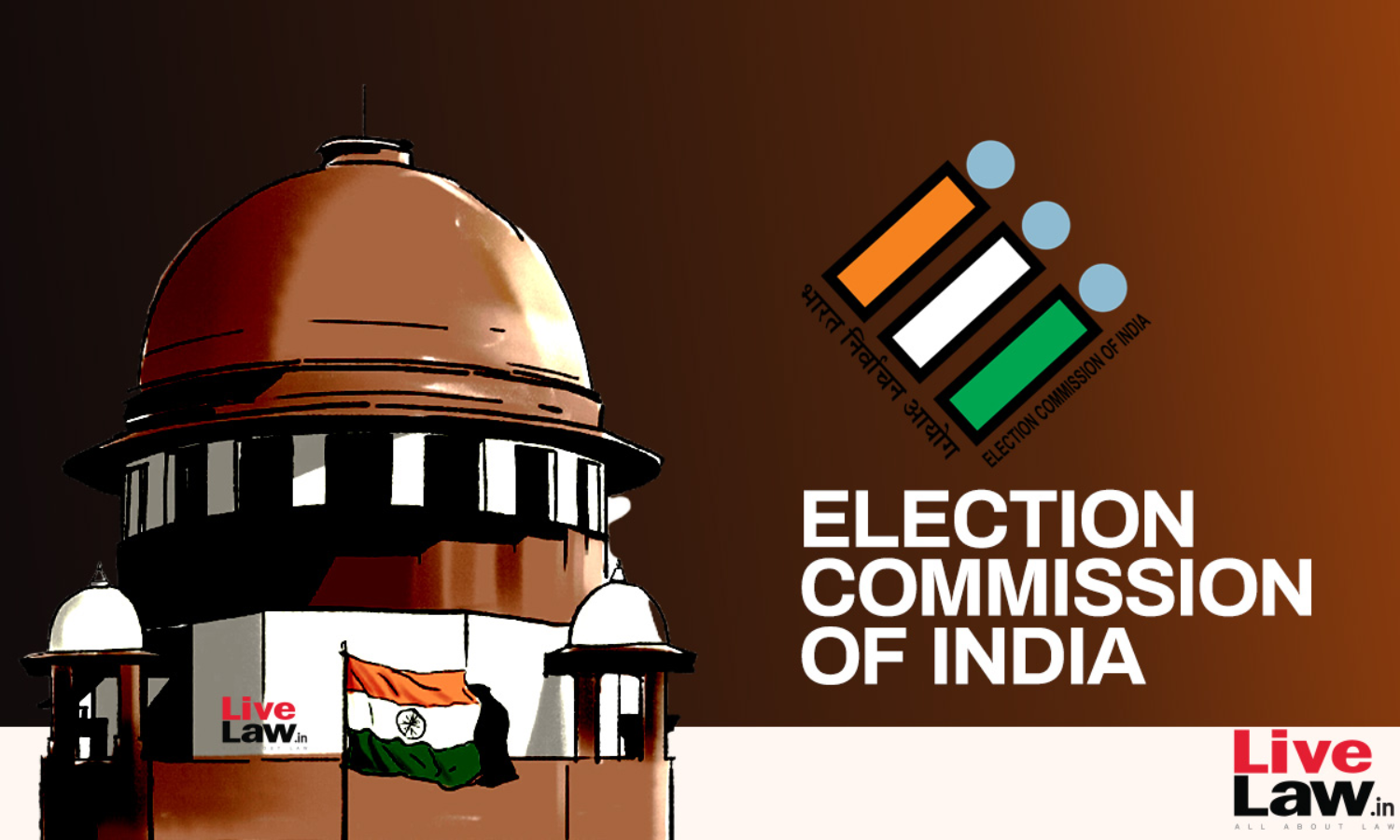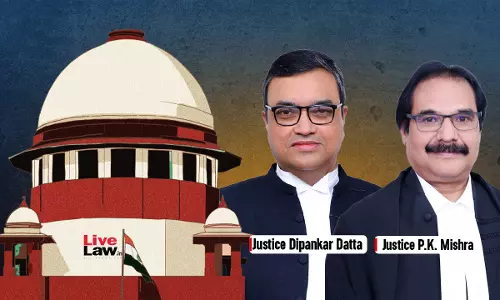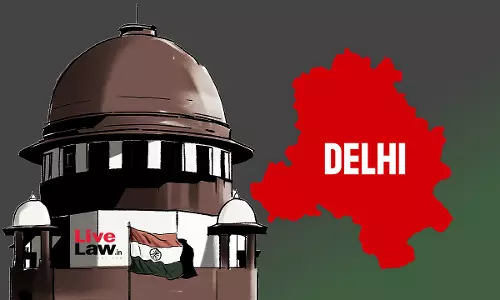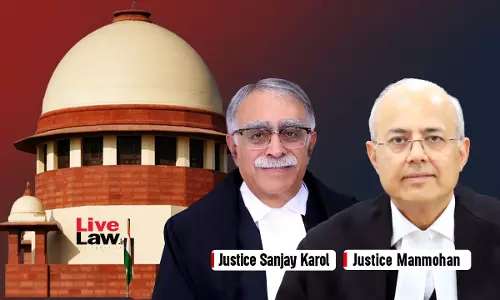Over 4 Crore VVPAT Slips Verified, No Mismatch Ever Found; EVM Tampering Impossible : ECI Tells Supreme Court

The Election Commission of India has told the Supreme Court that no mismatch has been detected ever between the votes counted in the Electronic Voting Machines and the Voter Verifiable Paper Audit Trail slips (VVPATs).The ECI said that it has matched the EVM votes with more than 4 crore VVPAT slips and no instance of mismatch has been found so far. The ECI stated this in the written...
The Election Commission of India has told the Supreme Court that no mismatch has been detected ever between the votes counted in the Electronic Voting Machines and the Voter Verifiable Paper Audit Trail slips (VVPATs).
The ECI said that it has matched the EVM votes with more than 4 crore VVPAT slips and no instance of mismatch has been found so far. The ECI stated this in the written statement filed in response to the queries raised by the Supreme Court (on April 16) while hearing petitions seeking complete verification of Electronic Voting Machine (EVM) data against the Voter Verifiable Paper Audit Trail slips (VVPATs).
The bench comprising Justices Sanjiv Khanna and Dipankar Datta reserved judgment in the matter today.
The queries raised by the Court and the ECI's responses are given below.
Issue 1. WHETHER ALL THE 3 UNITS AND VVPAT BU, CU WHICH ARE USED TOGETHER TO CONDUCT THE POLL STORED TOGETHER?
Yes. The Ballot Unit(BU), CU(Control Unit) and VVPAT together constitute the EVM and all three units are stored ED in the Strong Rooms after the election which is sealed in the presence of the candidates/their agents. The EVMs are stored for a period of at least 45 days in the Strong Rooms, i.e. the period for filing of Election Petitions.
Issue 2. WHETHER ANY SOFTWARE IS INSERTED IN VVPAT AT THE TIME OF SYMBOL LOADING?
- The VVPAT is only a printer. No software is involved in the loading of symbols in VVPAT by SLU. No software is uploaded or can be uploaded in the VVPAT through SLU.
- During the symbol loading process, there is no scope for inserting any program or application onto VVPATs as VVPATs can accept only image file of specified format (.bmp) containing serial number, candidate details and their symbols. Any file in any other format will not get loaded onto VVPATS.
- Upon Symbol Loading a test printout is signed and certified by the Returning Officer / Assistant Returning Officer.
- Entire process is conducted in the presence of contesting candidates or their agents/representatives and it is also shown on a big monitor / TV Screen.
Issue 3. PARTICIPATION OF POLITICAL PARTIES AND CANDIDATES IN THE PROCESS OF DEPLOYMENT OF EVM - VVPATS.
Entire process from procurement of machines from BEL/ECIL till storage after counting is represented in Chart Form which is annexed as ANNEXURE - A from page 10 to 11. (Annexure A is available at the end of the story). Detailed procedures are provided in EVM Manual [Annexure - C/40 of ECI Counter at page 560 (Vol. II)].
Issue 4. WHETHER POLLING OFFICER HAS THE OPPORTUNITY TO SEE THE RESULT OF THE POLLING STATION DURING THE POLL DAY?
No. Polling Officer cannot see the Result as the "Result" button is sealed. Polling officer does not have the access to see the results on the poll day as prior to the start of actual polls the 'Result' section of Control Unit is sealed in the presence of the polling agents with their signatures affixed on the seals.
Issue 5. WHETHER, AFTER POLLING, THERE IS A POSSIBILITY OF TAMPERING OF EVMS?
- No tampering is possible in EVM at any stage.
- After completion of poll the Presiding Officer presses the Close' button. Thereafter, the EVM does not accept any vote. The poll start time' and 'end time' are recorded in the machine as well as by the Presiding Officer. After the close of poll, the Control Unit is switched off and thereafter the Ballot Unit is disconnected from the Control Unit and kept separately in their respective carrying cases and sealed with paper slips on which polling agents also sign.
- Further, the Presiding officer has to hand over to each polling agent a copy of the account of total votes recorded in Form 17-C - Part 1 [Form 17-C is annexed as ANNEXURE - B from page 12 to 4.
- At the time of counting of votes, the total votes recorded in a particular control unit is tallied with the account of votes in Form 17-C and if there is any discrepancy, Counting Agents of candidates can request for counting VVPAT paper slips under Rule 56(D).
Issue 6. WHAT ARE THE PENAL PROVISIONS APPLICABLE ATTEMPT AT MANIPULATION WITH THE ELECTORAL PROCESS/EVM?
- Section 131 of RP Act, 1951 - Penalty for disorderly conduct in or near polling stations: Presiding Officer can direct Police Officer to immediately arrest such person punishment - imprisonment for 3 months or fine or both.
- Section 132 of RP Act, 1951- Penalty for misconduct at the polling station: Presiding Officer can direct for removal of such person from Polling Station - punishment imprisonment for 3 months or fine or both.
- Section 134 of RP Act, 1951- Breaches of official duty in connection with elections: Any act or omission on part of officers tasked with election duty is punishable with fine which may extend to five hundred rupees.
- Section 136 of RP Act, 1951- Other offences and penalties thereof: fraudulently defacing ballot paper, fraudulently or without authority destroying, opening otherwise interfering with ballot boxes is punishable-punishment - for upto 2 years months or fine or both for election officers and for 6 months or fine or both for any other person.
- Section 177 of IPC, 1860 - Furnishing false information - whoever. being legally bound to furnish information to any public servant furnishes information which he knows or has reason to believe to be false is punishable - punishment - for upto 2 years months or fine.
Issue 7. WHETHER CLOCK DATA (SHOWING THE DATE AND TIME WHEN THE VOTES WERE CAST) IS SHOWN TO THE CANDIDATES DURING COUNTING?
Control Unit has a clock that records time stamp for each vote. However, this data can be E retrieved only if Competent Court asks for the data as it will compromise the secrecy of ES voters by comparing data with the sequence of voters mentioned in Form-17A.
Issue 8. WHY DOES IT TAKE ONE HOUR TO COUNT VVPAT OF ONE POLLING STATION?
- On an average, 1,000 VVPAT slips are required to be counted per polling station.
- The slips counting process involves - verification of unique ID of VVPAT, opening the VVPAT dropbox, taking out the paper slips, counting the total number of slips, matching the number of slips with the total votes polled as per Form 17C, segregation of candidate-wise VVPAT slips, making candidate-wise bundles of 25 slips and counting of bundles and leftover slips.
- Due to the small size and special nature of the paper that makes it sticky the manual counting of VVPAT slips is cumbersome at every step outlined above. The process cannot be expedited or hurried.
- There are instances of re-count and re-verification of slips till the candidate-wise tallying is done. This again consumes more time.
- It may be noted that the overall environment in a Counting centre is charged up and the counting personnel are under tremendous mental pressure. This is also a factor that affects the speed of counting VVPAT slips.
Issue 9. WHY THERE CAN BE NO MISMATCH BETWEEN VOTE POLLED AND VOTES COUNTED?
- There cannot be any mismatch between votes polled and votes counted as the votes are registered in the Control Unit only after receiving the confirmation from VVPAT about the print and fall of VVPAT paper slip.
- There is a "Fall Sensor" provided in the VVPAT which senses the cut and fall of paper slip into the ballot box. Only after the slip is fallen, the VVPAT acknowledges to the CU that command has been executed and then CU records the vote and sounds a loud beep.
- In case, there is no cut and fall of the paper slip, VVPAT shows "FALL ERROR" and no vote is recorded in CU ensuring that there is no possibility for mismatch in the votes polled. No beep sound would indicate that the vote is not recorded and polling officials will change the entire set of CU, BU and VVPAT.
Issue 10. ISSUE OF SLIGHT TINT IN GLASS OF VVPAT
Right from the time of introduction of VVPAT, the window colour of VVPAT has been the same. Marginally tinted glass was used to maintain the secrecy of voting so that, even by mistake, anyone other than the voter is not able to view the paper slip easily.
Issue11. RESULT OF ALL VVPAT PAPER SLIP COUNTING DONE TILL DATE.
- Complaints of Voters under Rule 49MA - Total Instances: 26 | Mismatch: 0
- Re-counting request under Rule 56(D) - Total Instances: 100 | Mismatch: 0
- Random verification of 5 polling booth per assembly segment - Total Instances: 41,629 | Mismatch: 0
- Number of VVPAT paper slips matched - Total Instances: More than 4 Cr. | Mismatch: 0
Issue 12. GROWTH IN NUMBER OF ELECTORS AND P MACHINES FROM 2019 ΤΟ 2024:
- Polling Stations: 2019-10.35 Lakhs: 2024 - 10.48 Lakhs
- Votes Polled: 2019 - About 61.4 Crore; 2024 - About 97 Crore registered voters
- Ballot Unit: 23.3 Lakh. 2024: 21.6 Lakh
- Control Unit: 16.35 Lakh | 2024: 16.8 Lakh
- VVPAT: 17.4 Lakh | 2024:17.7 Lakh
Issue 13. TECHNICAL EXPERTS COMMITTEE
- In order to continuously strengthen the credibility and integrity of elections, as a Constitutional Authority entrusted with the task of conducting the elections, the ECI has taken all necessary steps including the participation of independent technical experts whose committee is called as Technical Experts Committee. The experts who form part of the Technical Experts Committee are not employees of the Election Commission of India and are not paid any remuneration.
- 1 TEC was formed in January, 1990- Prof. S. Sampath, Chairman Technical Advisory Committee, DRDO: Prof. P. V. Indiresan, IIT Delhi; Dr. Rao C. Kasarabada, Director, Electornic Research & Development Center (ERDC), Trivandrum.
- 2nd TEC formed in 2005 Prof. P. V. Indiresan, Ex-Director, IIT Mardras; Prof. D. T. Shahani, IIT Delhi; Prof. A. K. Agarwala, IIT Delhi.
- 3rd TEC formed in 2010 Prof. D. T. Shahani, Prof. Emeritus, IIT Delhi; Prof. Rajat Moona, IIT Bhilai, Former Director General CDAC; Prof. A.K. Aggarwala, IIT Delhi: Prof. Dinesh K. Sharma, IIT Bombay.
- ECIL and BEL have designed the EVMs and VVPATs and the designs were vetted by the TEC.
Issue 14. WHETHER ECI REPLIED TO THE QUERIES OF PARLIAMENTARY COMMITTEE REFERRED IN THE NEWS REPORT AT ANNEXURE P/16, PAGE- 434 OF WRIT PETITION NO. 184/2024 TITLED AS ARUN KUMAR AGRAWAL VS ECI
Reply was sent on 5 July, 2019
Issue 15. DISCREPANCY IN DATA MENTIONED IN NEWS REPORT OF QUINT [ANNEXURE P/17, PAGE- 436 OF WRIT PETITION NO. 184/2024 TITLED AS ARUN KUMAR AGRAWAL VS ECI]
- Quint has not disclosed that discrepancy is with respect to live voter turnout data uploaded on ECI website during 2019 General Election. The discrepancy in voter turnout data has nothing to do with the EVM. During 2019 General Elections, a mechanism was adopted to give a real time approximation of voter turnout. Voter turnout data was published on ECI website on real-time basis by taking inputs from Presiding Officers of polling stations.
- There was no mismatch between the data of votes polled as per EVMs which is recorded in Form 17C and the data of results which is declared as per Form 20.
Case Title: Association of Democratic Reforms v. Election Commission of India & Anr. | Writ Petition (Civil) No. 434 of 2023




